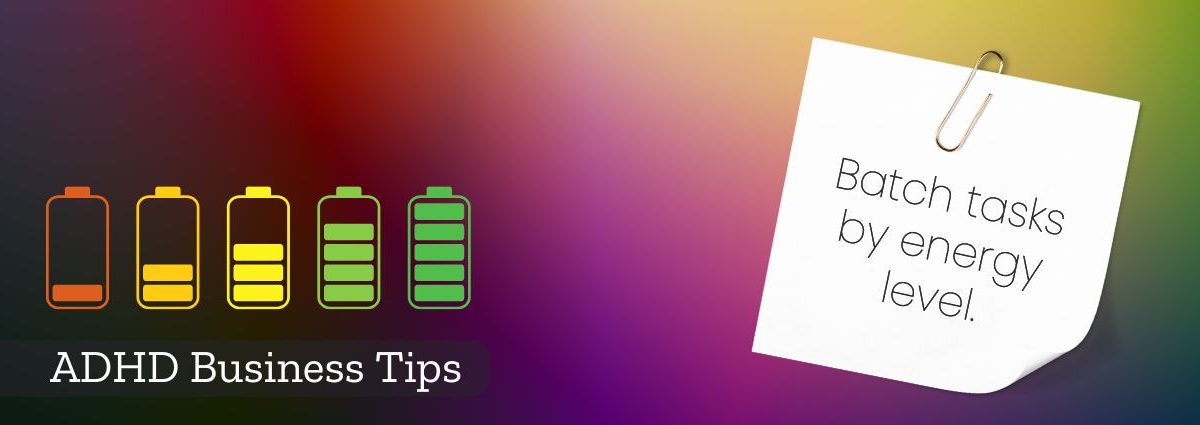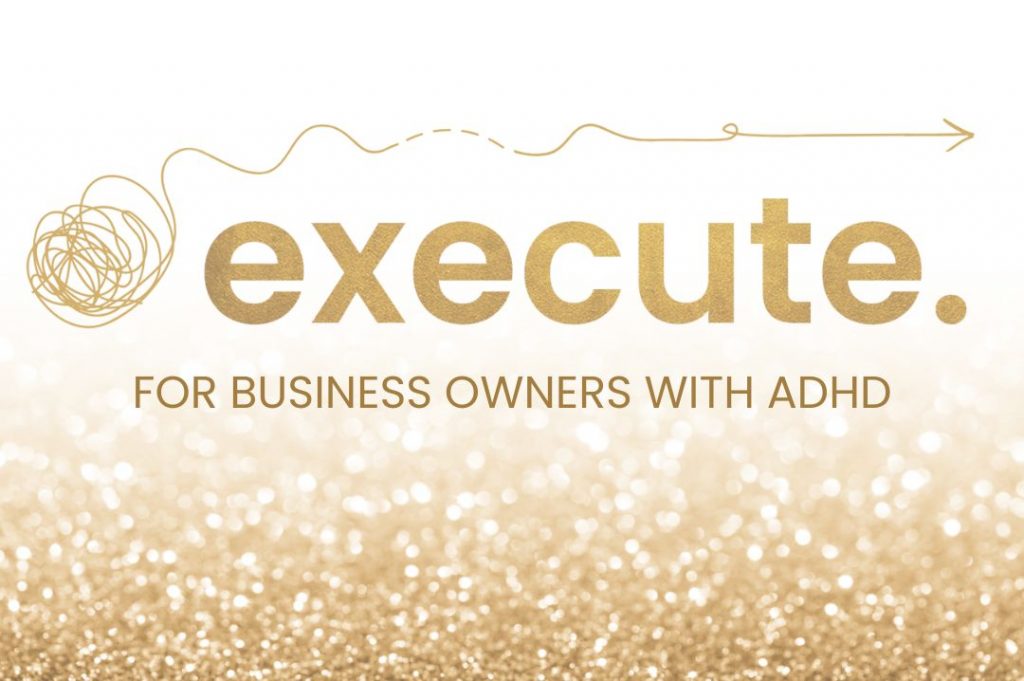As a business owner with ADHD, you’re intimately familiar with the unique challenges and strengths that come with your neurodiversity. The fluctuating energy levels, the bursts of hyperfocus, and the struggles with routine tasks can make traditional productivity methods feel like they’re designed for someone else. But what if you could always find something constructive to make progress on regardless of your energy level?
Enter energy-based task batching: a simple but clever strategy that aligns your work with your natural energy fluctuations. Let’s look more closely at how you can implement this method to improve your productivity and business management.
Understanding Energy-Based Task Batching
Energy-based task batching is more than just a time management technique; it’s a holistic approach to organising your workday that takes into account the natural ebbs and flows of your energy and focus. For those with ADHD, these fluctuations can be more pronounced, making this method particularly effective.
The core principle is simple: match the complexity and nature of tasks to your energy levels throughout the day. This approach allows you to leverage your periods of high focus for challenging work while still making progress on necessary but less demanding tasks during lower energy periods.
Implementing the Strategy
Here are some steps to take if you want to implement energy-based task batching, the first three are the most important:
1. Map your Energy Landscape:
The first step is to become intimately acquainted with your personal energy patterns. For a week or two, keep a detailed log of your energy levels throughout each day. Note when you feel most alert, when you experience energy dips, and any patterns that emerge.
ADHD Tip: Use a mood tracking app or a simple colour-coded system in your planner to make this process more engaging and easier to maintain.
2. Categorise your tasks:
Once you have a clear picture of your energy patterns, it’s time to categorise your regular tasks based on the mental and physical energy they require. Create three main categories:
– High-Energy Tasks: These typically include strategic planning, creative problem-solving, important decision-making, and tasks that require intense focus or innovation.
– Moderate-Energy Tasks: This category might include team meetings, client calls, routine analysis, or tasks that require steady attention but not intense concentration.
– Low-Energy Tasks: These are often administrative in nature, such as email management, data entry, or organisational tasks that can be done on autopilot.
Remember, only you will know what tasks fit into each category so make sure you’re honest with yourself when you’re categorising!
ADHD Tip: Make this process visual and interactive. Use coloured sticky notes or a digital mind-mapping tool to categorise tasks in a way that engages your ADHD brain.
3. Align tasks with energy levels:
Now comes the core of the strategy: matching your tasks to your energy levels. Schedule your high-energy tasks during your peak alertness times. For many, this might be in the morning, but trust your personal energy map. Reserve your low-energy tasks for times when you typically experience a slump.
ADHD Tip: Use time-blocks in your calendar, colour-coding different energy levels to create a visual guide for your day.
4. Use Energy Boosters:
There will be times when you need to tackle a high-energy task, but your batteries are running low. Have a toolkit of quick energy-boosting strategies ready:
– Physical movement: A set of star jumps or a brisk walk around the block
– Hydration and nutrition: Keep healthy, energy-boosting snacks and water easily accessible.
– Environment changes: Sometimes, simply moving to a different room or outdoor space can provide a fresh burst of energy.
– Power naps: A short 10-20 minute nap can be incredibly rejuvenating for the ADHD brain.
ADHD Tip: Create an “energy emergency kit” with items like a stress ball, essential oils, or a favourite energising playlist to quickly shift your state.
5. Protect your Prime Time:
Your high-energy periods are golden. Protect them fiercely. This might mean:
– Setting up “do not disturb” modes on your devices
– Communicating clear boundaries to your team about interruptions
– Creating a dedicated, distraction-free workspace for these periods
ADHD Tip: Consider using noise-cancelling headphones or a visual cue (like a specific hat or sign) to signal to others that you’re in a high-focus zone.
6. Take strategic breaks:
Regular breaks are crucial for maintaining focus and energy, especially for the ADHD brain. Incorporate short breaks between tasks or use techniques like the Pomodoro method (25 minutes of work followed by a 5-minute break) to maintain momentum.
ADHD Tip: Make your breaks active and engaging. A quick dance session, a few yoga poses, or even a brief outdoor walk can help reset your focus.
7. Continuous Refinement: The Key to Long-Term Success:
Remember, this is not a set-it-and-forget-it system. Your energy patterns may change over time – or you may not discover any patterns at all – and what works one week might not work the next. Regular reflection and adjustment are crucial.
Set aside time regularly to review how well your energy-batching system is working. Be honest with yourself about what’s effective and what’s not, and don’t be afraid to make changes.
ADHD Tip: Make this review process fun and rewarding. Celebrate your wins, no matter how small, and approach challenges with curiosity rather than frustration.
TRY IT OUT:
After categorising, create a “task buffet” – a selection of tasks for different energy levels that you can choose from based on how you’re feeling in the moment.
One of the superpowers of the ADHD brain is its ability to pivot quickly. Use this to your advantage. While having a structured plan is beneficial, a great place to start is to keep a list with a mix of high, moderate, and low-energy tasks available so you can adapt as needed.
If you use a list app like Todoist or Microsoft To-Do, try creating tags or labels for each category so you can filter your list to easily find tasks to suit your current energy level.
Energy-based task batching is more than just a productivity hack; it’s a way of honouring your ADHD brain’s unique wiring. By aligning your work with your natural energy fluctuations, you’re not just managing your ADHD – you’re leveraging it as a strength.
This approach allows you to tap into the hyperfocus and creativity that ADHD can bring, while also providing structure for those necessary but less exciting tasks. It’s about working smarter, not harder, and recognising that your best work happens when you’re in sync with your natural rhythms.
As you implement this strategy, be patient with yourself. It may take time to find the perfect balance, but the payoff – in terms of productivity, reduced stress, and improved work-life balance – is well worth the effort.
Remember, your ADHD is not just a challenge to overcome; it’s a unique perspective that can drive innovation and success in your business. By mastering energy-based task batching, you’re not just managing your day – you’re opening up to your full potential as an ADHD business owner.
What kind of tasks belong in each category for you?





Recent Comments